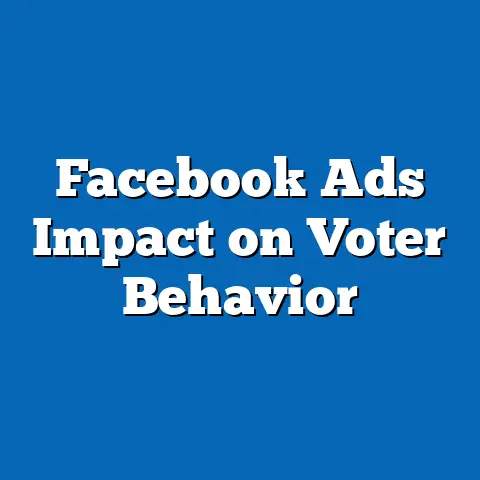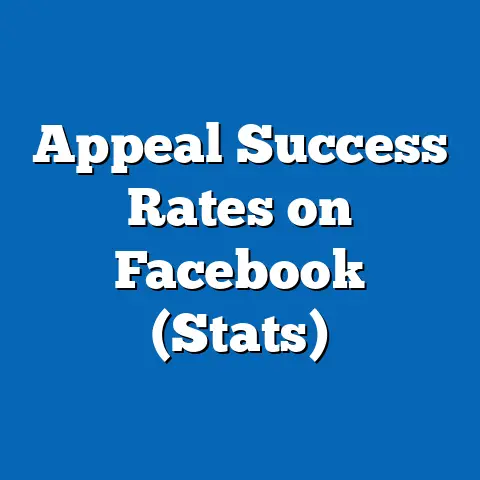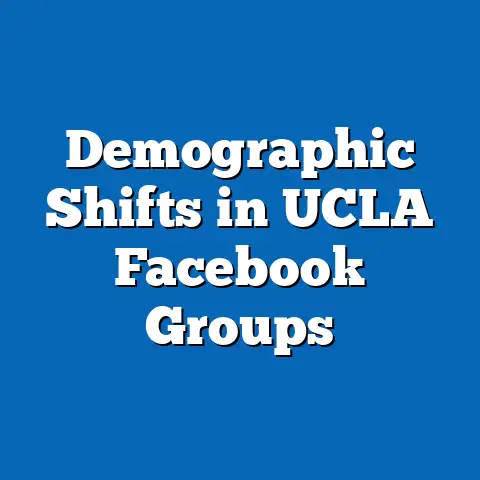Seasonal Trends in Facebook Ad Investments
In the ever-evolving landscape of digital marketing, seasonal trends in Facebook ad investments stand out as a distinctive and dynamic phenomenon. Unlike static advertising strategies, seasonal ad spending reflects the cyclical nature of consumer behavior, cultural events, and economic patterns, making it a critical area of study for marketers and researchers alike. These trends are not merely fluctuations in budget allocation; they embody the intersection of human psychology, societal rhythms, and technological platforms, offering a unique lens through which to understand modern advertising dynamics.
What sets seasonal trends in Facebook ad investments apart is their responsiveness to temporal shifts—holidays, weather changes, and cultural milestones—that drive consumer engagement and purchasing decisions. This article delves into the defining characteristics of these trends, explores their historical context, and examines their broader societal implications. By analyzing data-driven patterns and expert perspectives, we aim to provide a nuanced understanding of how seasonal advertising on Facebook shapes and is shaped by the world around us.
Defining Characteristics of Seasonal Trends in Facebook Ad Investments
Seasonal trends in Facebook advertising are characterized by predictable spikes and dips in investment tied to specific times of the year. Major holidays such as Christmas, Black Friday, and Valentine’s Day often see significant increases in ad spending as businesses capitalize on heightened consumer demand. According to a 2022 report by WordStream, ad costs on Facebook can increase by as much as 25-30% during the fourth quarter due to holiday shopping fervor, illustrating the intensity of seasonal competition.
Beyond holidays, other seasonal factors such as back-to-school periods, summer vacations, and even weather-related events influence ad investments. For instance, retailers may ramp up campaigns for winter clothing in colder months, while travel companies target summer getaways during warmer seasons. These patterns are not uniform across industries, adding a layer of complexity to how businesses allocate their budgets.
Another key characteristic is the role of audience behavior on the platform. Facebook’s vast user base—over 2.9 billion monthly active users as of 2023—exhibits seasonal shifts in online activity, with engagement peaking during holidays and dipping during slower periods like early January. Advertisers must adapt to these behavioral changes, often increasing investments during high-engagement windows to maximize reach and conversion rates.
Finally, the competitive nature of seasonal advertising on Facebook cannot be overlooked. As more businesses vie for attention during peak seasons, the cost-per-click (CPC) and cost-per-impression (CPM) metrics often surge, forcing advertisers to strategize meticulously. This interplay of timing, audience behavior, and competition defines the unique rhythm of seasonal ad investments on the platform.
Historical Context: The Evolution of Seasonal Advertising on Facebook
To fully grasp the significance of seasonal trends in Facebook ad investments, it is essential to trace their historical roots and the platform’s role in shaping modern advertising. Facebook, launched in 2004, initially served as a social networking site with minimal commercial focus. However, by 2007, the introduction of Facebook Ads marked a turning point, transforming the platform into a powerhouse for targeted advertising.
The concept of seasonal advertising is not new; traditional media like television and print have long leveraged holidays and seasonal events to drive sales. Iconic campaigns, such as Coca-Cola’s Christmas ads featuring Santa Claus, set a precedent for associating brands with specific times of the year. What Facebook introduced, however, was an unprecedented level of precision and scalability through data-driven targeting, allowing advertisers to tailor seasonal campaigns to specific demographics, interests, and behaviors.
Over the years, significant societal shifts—such as the increasing reliance on online shopping during the COVID-19 pandemic—further amplified seasonal ad investments on Facebook. The 2020 holiday season, for instance, saw a 44% year-over-year increase in e-commerce ad spending on the platform, as reported by Socialbakers, reflecting how external crises can accelerate digital advertising trends. This historical trajectory underscores how technological advancements, economic changes, and cultural moments have shaped the landscape of seasonal advertising on Facebook.
Societal Implications: How Seasonal Ad Trends Shape and Reflect Culture
Seasonal trends in Facebook ad investments are not just a reflection of marketing strategies; they also have profound societal implications, influencing consumer behavior, cultural norms, and economic patterns. At the most visible level, these trends contribute to the commercialization of holidays and seasonal events, often amplifying materialism and consumption. For example, the aggressive ad campaigns surrounding Black Friday and Cyber Monday have transformed these days into global shopping phenomena, reshaping how people perceive and prioritize spending.
This commercialization can have both positive and negative effects. On one hand, seasonal ads drive economic activity, supporting businesses and creating jobs, particularly in retail and logistics. A 2021 study by the National Retail Federation estimated that holiday spending in the U.S. alone reached $886.7 billion, much of it fueled by digital advertising on platforms like Facebook. On the other hand, critics argue that the relentless push of seasonal ads contributes to overconsumption, financial stress, and environmental degradation due to increased production and shipping demands.
Beyond economics, seasonal ad trends on Facebook also reflect and reinforce cultural values. Campaigns often tap into themes of family, nostalgia, and celebration during holidays, shaping how societies experience and remember these occasions. However, this can sometimes lead to exclusionary narratives, as not all demographics or cultures are equally represented in mainstream seasonal advertising, raising questions about diversity and inclusivity in digital marketing.
Moreover, the reliance on data-driven targeting during peak seasons highlights broader societal concerns about privacy and surveillance. As advertisers use Facebook’s sophisticated algorithms to predict and influence consumer behavior, debates about data ethics and user consent become increasingly relevant. A 2022 Pew Research Center survey found that 74% of Americans are concerned about how their online activity is tracked for advertising purposes, a sentiment that is particularly pronounced during high-stakes seasonal campaigns.
Technological Factors: The Role of Platform Features in Seasonal Trends
Facebook’s technological infrastructure plays a pivotal role in shaping seasonal ad investment trends, offering tools that enable advertisers to capitalize on temporal opportunities. Features like Custom Audiences and Lookalike Audiences allow businesses to target users with precision during peak seasons, ensuring that ads reach those most likely to convert. Dynamic Ads, which automatically adjust content based on user behavior, are particularly effective during holidays when product preferences can shift rapidly.
The platform’s real-time analytics also empower advertisers to respond to seasonal fluctuations instantaneously. For instance, if a campaign underperforms during the early days of a holiday season, marketers can pivot by adjusting budgets, creatives, or targeting parameters. This agility is a cornerstone of successful seasonal advertising, as noted by digital marketing expert Neil Patel, who emphasizes that “Facebook’s ability to provide immediate feedback during high-traffic seasons is a game-changer for ROI.”
Additionally, the integration of e-commerce functionalities, such as Facebook Shops and in-app checkout options, has streamlined the path from ad exposure to purchase, particularly during seasonal peaks. A 2023 report by eMarketer predicted that social commerce sales on platforms like Facebook would surpass $50 billion by 2025, with seasonal events driving a significant portion of this growth. These technological advancements illustrate how the platform’s evolution continuously reshapes seasonal ad strategies.
Economic Factors: Budget Allocation and Market Competition
Economically, seasonal trends in Facebook ad investments are influenced by both macroeconomic conditions and micro-level business decisions. During periods of economic growth, businesses are more likely to increase ad budgets for seasonal campaigns, anticipating higher consumer spending. Conversely, during recessions or periods of uncertainty, companies may scale back investments or focus on cost-effective targeting to maintain profitability.
Market competition is another critical economic factor. As previously mentioned, peak seasons like the holiday period drive up CPC and CPM rates due to heightened demand for ad space. According to a 2022 analysis by Hootsuite, the average CPC on Facebook during December can be 45% higher than in non-peak months, posing challenges for small businesses with limited budgets. This competitive dynamic often forces advertisers to seek alternative strategies, such as targeting niche audiences or leveraging less saturated seasonal events.
Furthermore, the economic impact of seasonal ad investments extends to the broader digital advertising ecosystem. Facebook’s parent company, Meta, reported that ad revenue in Q4 2022 accounted for nearly 30% of its annual earnings, underscoring the financial stakes of seasonal trends. This reliance on seasonal spikes highlights the interconnectedness of economic conditions, corporate performance, and advertising strategies.
Social and Cultural Factors: Understanding Audience Dynamics
Social and cultural factors are at the heart of seasonal trends in Facebook ad investments, as they dictate how audiences engage with content during specific times of the year. Holidays, for instance, are often associated with emotional triggers—joy, nostalgia, or generosity—that advertisers exploit to create compelling campaigns. A 2021 study by Kantar found that 68% of consumers are more likely to respond to ads with emotional storytelling during the holiday season, a trend that shapes investment decisions.
Cultural differences also play a significant role in how seasonal trends manifest across regions. While Christmas dominates ad spending in Western markets, events like Diwali in India or Singles’ Day in China drive massive investments in their respective regions. Facebook’s global reach necessitates that advertisers tailor campaigns to local customs and traditions, adding complexity to seasonal strategies. For example, a multinational brand might allocate separate budgets for Lunar New Year ads in Asia while focusing on Thanksgiving promotions in the U.S.
Social media trends further influence seasonal ad investments, as viral challenges or memes can create unexpected opportunities for engagement. During Halloween, for instance, brands often invest in playful, themed content to align with user-generated trends on Facebook. This adaptability to social dynamics ensures that seasonal campaigns remain relevant and resonant with diverse audiences.
Nuances and Diversity Within Seasonal Trends
While seasonal trends in Facebook ad investments often follow predictable patterns, it is crucial to acknowledge the nuances and diversity within these cycles. Not all industries experience uniform peaks; for example, while retail sees a surge during holidays, sectors like higher education may invest more during back-to-school seasons or application periods. Similarly, B2B companies might reduce spending during consumer-focused holidays, focusing instead on fiscal year-end campaigns.
Geographic and demographic diversity also complicates seasonal trends. Rural audiences may respond differently to seasonal ads compared to urban consumers, while generational cohorts—such as Gen Z versus Baby Boomers—exhibit distinct preferences and behaviors. A 2023 report by Sprout Social highlighted that 55% of Gen Z users are influenced by social media ads during holidays, compared to only 30% of Boomers, underscoring the need for segmented strategies.
Additionally, the impact of global events, such as pandemics or geopolitical crises, can disrupt traditional seasonal patterns. The COVID-19 pandemic, for instance, shifted holiday ad investments toward online-only campaigns as physical stores faced restrictions. These variables remind us that seasonal trends are not monolithic but rather a mosaic of intersecting influences.
Quantitative Insights: Data on Seasonal Ad Spending
Data provides a concrete foundation for understanding seasonal trends in Facebook ad investments. According to a 2022 study by AdEspresso, the average CPM on Facebook during the holiday season (November-December) was $14.25, compared to a yearly average of $10.50, reflecting the heightened cost of advertising during peak periods. This spike is consistent across multiple years, with 2019 and 2021 showing similar increases of 30-40% in ad costs during Q4.
Engagement metrics also reveal seasonal variations. A 2023 report by Social Insider found that organic post engagement on Facebook increases by 18% during December, driven by holiday-related content. Paid ads, however, see even higher engagement, with click-through rates (CTR) rising by 22% during the same period, suggesting that users are more receptive to targeted seasonal messaging.
Industry-specific data further illustrates the diversity of seasonal investments. Retail and e-commerce account for nearly 60% of total ad spend on Facebook during the holiday season, per a 2022 eMarketer analysis, while sectors like travel and hospitality see spikes during summer months and early fall. These statistics highlight the importance of context in analyzing seasonal trends, as blanket assumptions fail to capture industry-specific dynamics.
Qualitative Perspectives: Expert Opinions and Case Studies
Beyond numbers, qualitative insights from industry experts and case studies provide a deeper understanding of seasonal ad trends on Facebook. Digital marketing strategist Amy Porterfield notes that “successful seasonal campaigns on Facebook hinge on storytelling and timing—brands must evoke emotion while hitting the right window of consumer intent.” Her perspective emphasizes the human element behind data-driven decisions, a theme echoed by many professionals in the field.
Case studies of successful campaigns further illuminate best practices. For instance, during the 2021 holiday season, fashion retailer ASOS launched a series of short, engaging video ads on Facebook targeting Gen Z users with gift ideas. By leveraging dynamic creative optimization and precise audience segmentation, ASOS reported a 35% increase in holiday sales attributed to the campaign, as documented by Meta’s own case study archives. Such examples underscore the potential of well-executed seasonal strategies.
Conversely, qualitative analysis also reveals pitfalls. Over-saturation during peak seasons can lead to ad fatigue, where users become desensitized to repetitive messaging. Marketing consultant Rand Fishkin warns that “bombarding users with holiday ads without differentiation can backfire, leading to lower engagement and wasted budgets.” This cautionary perspective highlights the need for creativity and restraint in seasonal advertising.
Implications for Businesses, Society, and the Digital Ecosystem
The seasonal trends in Facebook ad investments carry significant implications across multiple domains, starting with businesses. For companies of all sizes, understanding and leveraging these trends is critical to maximizing ROI and staying competitive. Small businesses, in particular, must balance limited budgets with the high costs of peak-season advertising, often necessitating innovative approaches like user-generated content or influencer partnerships.
In the workplace, seasonal ad trends influence hiring and resource allocation. Marketing teams often expand temporarily during peak seasons, while agencies report increased demand for campaign management services. A 2022 survey by the American Marketing Association found that 62% of agencies hire additional staff during Q4 to handle seasonal workloads, reflecting the ripple effect of these trends on employment.
For society, the implications are multifaceted. Seasonal ads on Facebook shape consumer expectations, often setting benchmarks for discounts, gift-giving, and holiday experiences. However, they also contribute to digital overload, as users face a barrage of promotional content during peak times. This phenomenon raises questions about mental health and the need for digital wellness initiatives to counteract advertising fatigue.
Within the digital ecosystem, seasonal trends reinforce Facebook’s dominance as an advertising platform while highlighting the challenges of ad saturation and privacy concerns. As competitors like TikTok and Pinterest vie for seasonal ad dollars, Meta must continue to innovate to maintain its market share. The platform’s response to these challenges—such as introducing new ad formats or enhancing privacy controls—will shape the future of seasonal advertising.
Forward-Looking Insights: The Future of Seasonal Ad Investments on Facebook
Looking ahead, several factors will likely influence the trajectory of seasonal trends in Facebook ad investments, though uncertainties remain. The continued growth of social commerce suggests that platforms like Facebook will become even more integral to seasonal shopping, with in-app purchasing streamlining the consumer journey. Analysts predict that by 2025, over 50% of holiday e-commerce sales will originate from social media ads, per a forecast by Insider Intelligence.
Emerging technologies, such as artificial intelligence and augmented reality, also hold promise for enhancing seasonal campaigns. AI-driven personalization could enable hyper-targeted ads that resonate deeply with individual users, while AR features might allow consumers to “try on” products virtually during holiday promotions. However, the adoption of these technologies will depend on cost, accessibility, and user acceptance.
Regulatory changes pose another uncertainty. With increasing scrutiny on data privacy—evidenced by policies like the EU’s GDPR and California’s CCPA—Facebook’s ability to deliver targeted seasonal ads may face constraints. Apple’s iOS 14.5 update, which introduced App Tracking Transparency, already impacted ad performance in 2021, and future regulations could further disrupt seasonal strategies.
Finally, shifting cultural attitudes toward consumption and sustainability may alter how seasonal ads are perceived and executed. As consumers prioritize eco-friendly practices, brands may need to align holiday campaigns with values of minimalism or ethical production. Whether this shift will dampen or redirect seasonal ad investments remains to be seen, but it underscores the evolving nature of societal expectations.
Conclusion: A Cyclical Yet Evolving Phenomenon
Seasonal trends in Facebook ad investments represent a fascinating intersection of technology, economics, culture, and human behavior, offering a window into the rhythms of modern society. Defined by predictable cycles yet nuanced by diverse influences, these trends reflect both the opportunities and challenges of digital advertising in a connected world. From their historical evolution to their societal implications, seasonal ad investments on Facebook reveal much about how we celebrate, consume, and communicate during pivotal moments of the year.
As we move forward, the interplay of innovation, regulation, and cultural shifts will continue to shape this landscape, presenting new possibilities and uncertainties. While data and technology will remain central to seasonal strategies, the human element—emotion, connection, and relevance—will ultimately determine their success. By embracing a balanced, nuanced approach to understanding these trends, businesses and society alike can navigate the seasonal waves of digital advertising with insight and adaptability.






